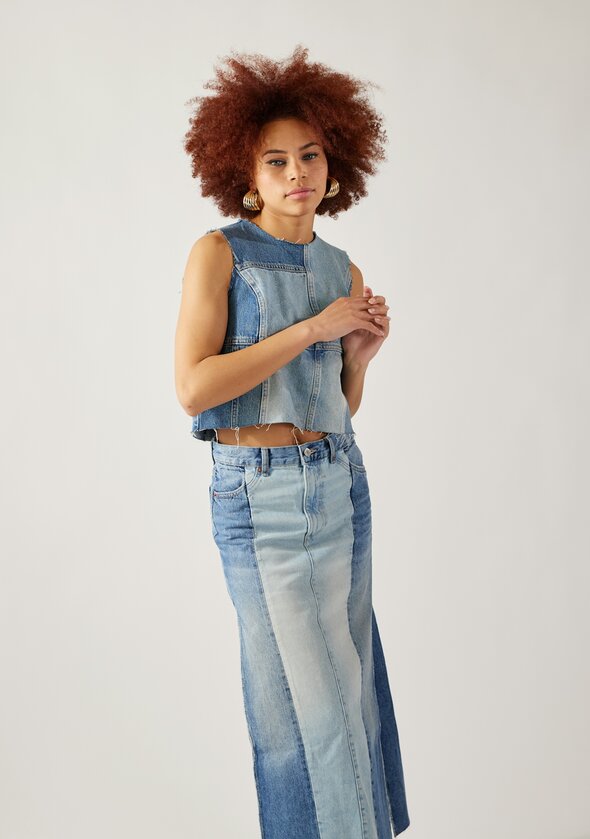As circularity becomes a core focus for the fashion industry, Extended Producer Responsibility (EPR) emerges as a critical framework, shifting the responsibility for the post-consumer phase of a product’s lifecycle from consumers and governments back to producers. For fashion executives, understanding EPR is essential for navigating the upcoming regulatory landscape and enhancing circularity initiatives within your fashion business. Here we explore the concept of EPR, its significance in the fashion industry, and how it can be effectively implemented.
What is Extended Producer Responsibility (EPR)?
In 2023, the EU Commission proposed an amendment to its Waste Framework Directive, targeting its Extended Producer Responsibility rules specifically towards the fashion and textile industry. Extended Producer Responsibility is an environmental policy which holds producers/brands accountable for the entire lifecycle of their products, from take-back and recycling to final disposal. Until now, responsibility for fashion’s waste problem has largely fallen on consumers, who have driven demand for secondhand fashion with peer-to-peer marketplaces that allow clothing items to remain in circulation beyond the initial use phase. However, without the infrastructure in place to handle final disposal; much of these efforts do no more than prolong the inevitable. EPR regulations provide a necessary drive for brands to do their part, extending responsibility for products beyond the point of sale and providing an incentive to design products that are easier to recycle, repair or reuse.
Understanding Extended Producer Responsibility (EPR) for the Fashion Industry
1. Waste Reduction - EPR champions the use of biodegradable materials or modular designs that facilitate easy disassembly and recycling for end-of-life management. By designing products with end-of-life considerations such as recyclability and durability in mind, your brand can significantly reduce the volume of textile waste it produces, positively impacting its environmental footprint.
2. Resource Efficiency - EPR creates an incentive to use resources more efficiently by encouraging the retrieval and reuse of materials. By implementing take-back schemes, fashion brands can reclaim valuable materials from old garments and re-introduce them into the production process, reducing the need for new resources. This process can also contribute to reducing energy consumption and greenhouse gas emissions associated with raw materials extraction and processing.
3. Innovation and Eco-Design - EPR can foster innovation by encouraging you as a brand to develop eco-friendly designs and sustainable production methods. This can lead to the development of new materials, such as biodegradable fabrics or textiles made from recycled content, and innovative processes that minimise waste and emissions.
4. Consumer Engagement - Brands can leverage EPR initiatives to build stronger customer relationships and attract environmentally conscious consumers, enhancing brand loyalty, reputation and acquisition.
Characterised by linear take-make-dispose models that encourage a throwaway culture, the fashion industry is a major contributor to global waste and pollution. EPR offers a pathway to mitigate these impacts by promoting sustainable practices throughout the product lifecycle. It’s significance for the fashion industry manifests in a number of ways:
- Waste Reduction - Extended Producer Responsibility champions the use of biodegradable materials or modular designs that facilitate easy disassembly and recycling for end-of-life management. By designing products with end-of-life-considerations such as recyclability and durability in mind, your brand can significantly reduce the volume of textile waste it produces, positively impacting its environmental footprint.
- Resource Efficiency - EPR creates an incentive to use resources more efficiently by encouraging the retrieval and reuse of materials. By implementing take-back schemes, fashion brands can reclaim valuable materials from old garments and re-introduce them into the production process, reducing the need for new resources. This process can also contribute to reducing energy consumption and greenhouse gas emissions associated with raw materials extraction and processing.
- Innovation and Eco-Design - EPR can foster innovation by encouraging you as a brand to develop eco-friendly designs and sustainable production methods. This can lead to the development of new materials, such as biodegradable fabrics or textiles made from recycled content, and innovative processes that minimise waste and emissions.
- Consumer Engagement - Brands can leverage EPR initiatives to build stronger customer relationships and attract environmentally conscious consumers, enhancing brand loyalty, reputation and acquisition.
Implementing EPR for your Fashion Brand
Regulatory Compliance - Stay ahead of EPR regulations from mandatory take-back schemes and recycling targets to reporting requirements which may differ by country or region. Ensuring compliance with these regulations can help avoid legal repercussions and financial penalties.
Product Design and Development - Integrate eco-design principles into your product development processes. That includes choosing sustainable materials, designing for durability and longevity, and considering the ease of disassembly and recycling. CircKit helps to make this process smoother by evaluating the environmental impact of your choices, right from the design phase! With our automated life cycle assessment (LCA) tool, your brand can accurately determine both the economic and planetary costs of your products, and highlight opportunities for improvement.
Take-Back Schemes and Recycling Programs - Set up collection points in retail stores, partner with recycling companies, and offer incentives for consumers to return used garments. By collaborating with logistics providers and waste management companies, your brand can ensure efficient collection, sorting, and recycling of returned products. Successful take-back programs not only educate consumers to raise awareness and encourage participation, but they are also a great way to enhance the customer experience through rewards and post-purchase engagement.
Supply Chain Collaboration - Work closely with your suppliers to ensure sustainable practices are adopted at every stage. By leveraging technologies, such as blockchain as well as implementing digital product passports, your brand can improve supply chain transparency, ensuring compliance with EPR requirements.
Monitoring and Reporting - Track the performance of your EPR initiatives, including the volume of products collected, recycled, and repurposed. Regular reporting can be a pain but it not only ensures compliance but also provides valuable insights into the effectiveness of EPR strategies. CircKit’s robust data management system can streamline the tracking and reporting process, enabling your brand to measure progress and identify areas for improvement.
Integration with Existing Systems
Extended Producer Responsibility (EPR) presents an exciting opportunity for your brand to enhance sustainability and reduce its environmental impact, improving existing business models through innovation and consumer engagement. By shifting responsibility for lifecycle management back to producers, EPR encourages more sustainable design, production, and end-of-life practices. It’s not just about regulatory compliance, EPR is a chance to embrace a forward-thinking approach that aligns with the growing consumer demand for sustainable innovation. Through strategic planning, collaboration, robust data management, and designing with circularity in mind from the start, your brand can successfully navigate the challenges of EPR, leading the way towards a more circular fashion future.



